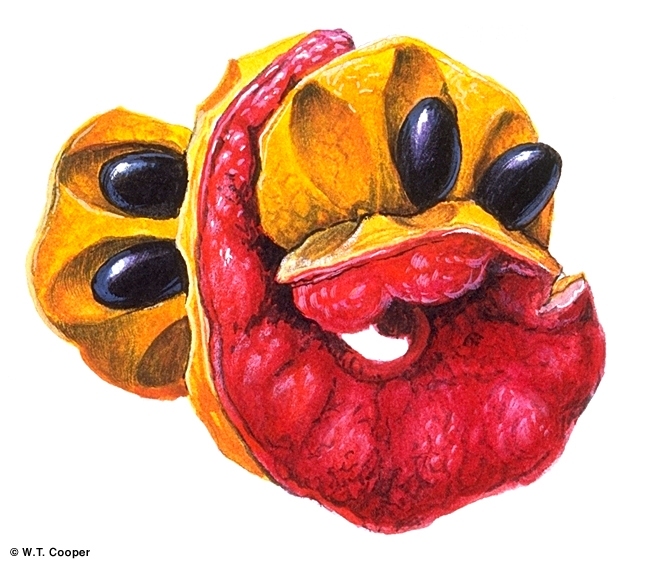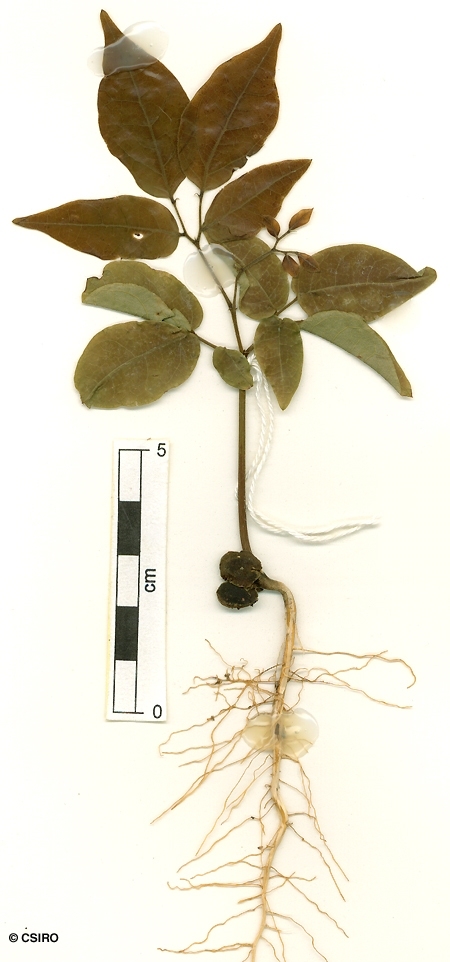Australian Tropical Rainforest Plants - Online edition
Archidendron whitei I.C.Nielsen





Nielsen, I.C. (1982) Nordic Journal of Botany 2: 489. Type: Atherton Forest district, Reserve No. R. 310, Qld, 11 Mar. 1953, K. J. White 53/405; holo: BRI 193052, 193053.
Usually a small tree, occasionally attaining 40 cm dbh.
Compound leaf sometimes reduced to two leaflets. Three or four raised glands usually visible on the upper surface of each compound leaf; one situated about half way along the compound leaf petiole, one on the compound leaf petiole just prior to its junction with the secondary axes and one on each of the secondary axes just prior to their junction with the leaflet stalks. Leaflet blades about 7-12.5 x 4.5-7 cm.
Fruits yellow or orange on the inner surface. Seeds about 9 x 6 mm.
First pair of leaves pinnate, each leaf usually with two leaflets; upper surface of the leaflet blade, petiole and stem with a few almost prostrate short hairs. At the tenth leaf stage: leaves bipinnate with four leaflets; small peg-like glands occur along the upper surface of the compound leaf petiole, one near the mid point and one at the apex of the petiole; similar glands occur on the secondary axes where the leaflets are attached; leaflet blades without glands; compound leaf hairy on all parts; hairs pale brown, erect. Seed germination time 26 days.
Endemic to NEQ, restricted to the area between the Mulgrave River and Tully. Altitudinal range from sea level to 800 m. Grows as an understory tree in well developed lowland and upland rain forest on a variety of sites.





